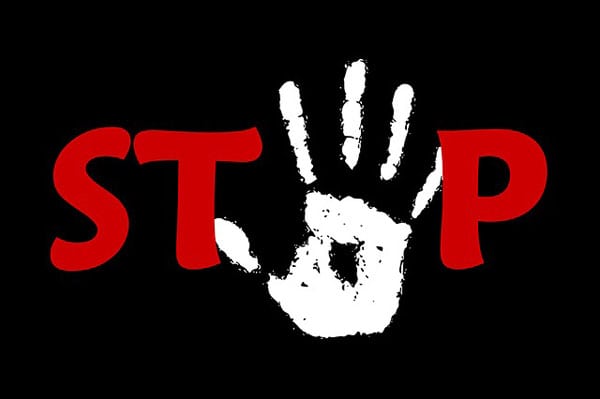
August 29, 2018; WOKV
Data kept by the Gun Violence Archive shows that to date in 2018, there have been more than 235 incidents in the United States in which someone with a gun deliberately shot four or more people—the generally accepted definition of a mass shooting.
But most gun violence in the United States is not part of a mass shooting. Every day, 96 Americans are killed with guns, and hundreds more are injured, reports the Everytown for Gun Safety Support Fund. One-third of gun deaths are homicides—a rate 25 times higher than that in other high-income countries. An estimated 44 percent of American adults say that they know someone who has been shot, and nearly 25 percent say they or someone in their family have been threatened by someone using a gun. Approximately three million children witness gun violence every year.
After many of these incidents, particularly mass shootings, calls are raised once again for gun reform. But gun control measures are difficult to pass, due to the powerful lobbies involved, and increased law enforcement isn’t necessarily the answer. In Jacksonville, Florida, where a 24-year-old video gamer opened fire during a tournament and killed two fellow players, City Councilman Reggie Gaffney introduced a $300,000 proposal for a “Stop the Violence” initiative, with small grants channeled to grassroots nonprofits—ones that already know their neighborhoods, who is at risk, how their communities will respond to different tactics, and what new approaches might work, but haven’t gotten off the ground due to a lack of resources.
Sign up for our free newsletters
Subscribe to NPQ's newsletters to have our top stories delivered directly to your inbox.
By signing up, you agree to our privacy policy and terms of use, and to receive messages from NPQ and our partners.
This Jacksonville effort builds on similar examples in other cities. For example, Better Family Life , a nonprofit in St. Louis, Missouri, employs a similar non-law-enforcement approach. James Clark, vice president of community outreach for the nonprofit, says he sees a new willingness to use violence and even to kill to settle differences. Better Family Life responded by creating gun violence de-escalation centers. This is how they work:
- Anyone who has firsthand knowledge of a conflict that they believe could lead to gun violence calls the center staff (any time of day or night) or drops in. With 80 percent of shootings, says Clark, there is a third party who knows the conflict exists and is likely to escalate, but can’t go to the police because that would be “snitching.”
- The next step is to create a “phone tree” with names and contact information for anyone who could credibly intervene with the potential assailant, helping to bring him or her to the center’s team for discussions. It could be a mother, a sibling, a girlfriend, even a favorite basketball coach. (Most neighborhood crimes, Clark notes, are not committed by professionals.)
- The team working on each case includes an outreach worker and a clinical therapist, who look for evidence of drug addiction and mental illness and make referrals if necessary. Better Family Life also is prepared to help the targeted person find employment, enroll in a GED class, or plug into other social services to address root causes contributing to frustration and violence.
A somewhat similar model for stopping gun-related homicides and injuries is Cure Violence, which has been implemented in Los Angeles, Chicago, and New York City. Ratifying Better Family Life’s approach, the Cure Violence team notes that for behavior change to be possible, the targeted person must trust and respect the intervening party. “Those mostly likely to commit violence will often not interact with someone at all if they do not trust them,” states a description of the Cure Violence process. “One of the best ways to have this sort of trust is to use workers who are from the community being served.”
But individual behavior change is not enough. Just as recovering drug addicts do better if they are discharged into supportive communities, so must neighborhoods nurture norms that work against violence as a means of proving oneself. “When violence is concentrated for a long period of time in an individual community, it becomes normalized and therefore even ‘expected’ by peers—and in fact by the whole community,” notes the Cure Violence team.
Do models like this actually work? The John Jay College of Criminal Justice Research and Evaluation Center analyzed the New York City experience with the Cure Violence model in 2017, seven years after the strategy was adopted. It found reductions in gun injuries of 37–50 percent in the South Bronx and Brooklyn. The center also documented a 14 percent reduction in attitudes supporting violence, with no change in control populations. However, more research is needed. The Annual Review of Public Health noted in 2015 that while each study it analyzed found at least some evidence in support of the Cure Violence approach, “none has been able to clearly disentangle the results from national and regional trends in violent crime.”
What is clear is that punitive approaches to prevention, such as the sweeping stop-and-frisk practices implemented by New York City and others in the past, do not work. “These enforcement strategies have merely contributed to mass incarceration and racial and socioeconomic disparities,” concludes the Urban Institute. “And even if such strategies reduced violence in the short term, they can have devastating, long-term effects on trust, legitimacy and cooperation with law enforcement in the very communities where cooperation is most essential.”—Pam Bailey













